Sega SG-1000
Top 10 Best Sega SG-1000 Games of All Time!
The SG-1000 (also known as the Sega Computer Videogame SG-1000) was Sega’s first cartridge-based home console and was released in response to a downturn in their arcade business. While the SG-1000 was not released in America, its library was fully compatible with the Sega Mark III/Master System. The architecture of the SG-1000 was nearly identical to the ColecoVision, but the console could not have been released at a worse time. The SG-1000 hit store shelves on the same day as the Nintendo Famicom. Sega found themselves in a losing battle even after releasing several hardware revisions, so they quickly got to work on an entirely new console to compete with Nintendo. The SG-1000 is nothing more than a footnote in history, but it provided the foundation for the more-successful Sega Master System.
10
Flicky
1984
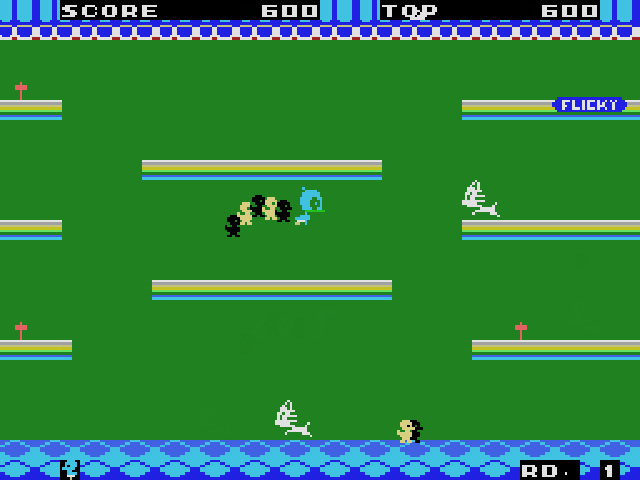
Flicky is arguably the best game designed for Sega’s System 1 arcade platform, and its characters made cameo appearances in many games in the years that followed. Players assume the role of a bird named Flicky in the game and are given the treacherous task of preventing small chicks from being eaten by a hungry cat and an aggressive iguana. In each stage, players race to collect all of the small birds before the predators can get to them. The chicks follow closely behind Flicky after being rescued, but they are still in danger. The cat tries to catch the chicks by running and jumping on platforms while the iguana can climb on walls an ceilings. Flicky was originally released as an arcade game, so a few concessions were made with the SG-1000 version. The backgrounds are stark, the animation is choppy, and the spites flicker when things get intense. It’s still a really fun game though, and the way the little chicks follow behind you is downright adorable.
9
Hustle Chumy
1984
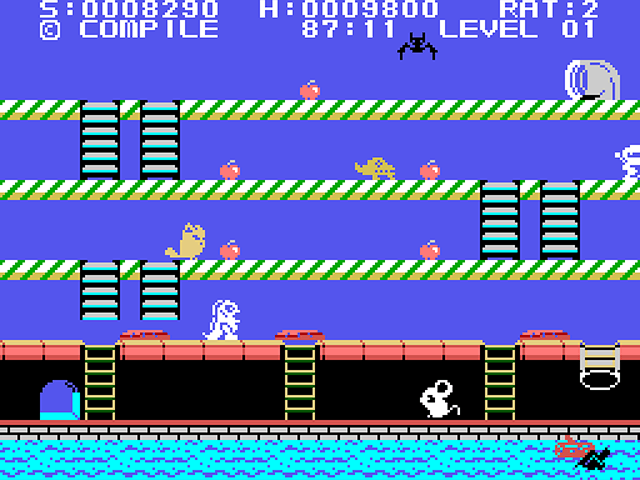
Hustle Chumy is a simple, single-screen platformer centered around a rat who’s searching for food in the sewers. The concept sounds disgusting, but the rat is surprisingly lovable. The rat faces opposition in the form of stray cats, alligators, bats, exterminators, and walking lizard-men. Like many platformers in the early ’80s, the primary mechanics in Hustle Chumy involves climbing ladders and collecting items. Where Hustle Chumy differs from most games is the fact that picking up items actually slows the player down. The rat will retain his leaping abilities, but his walking speed will be greatly diminished as his inventory increases. The premise of being slowed down by items creates an interesting dynamic wherein players actively avoid easy-to-obtain items at first. Most games from the era encouraged players to grab whatever they could, so Hustle Chumy feels somewhat less derivative than its contemporaries.
8
Space Invaders
1985
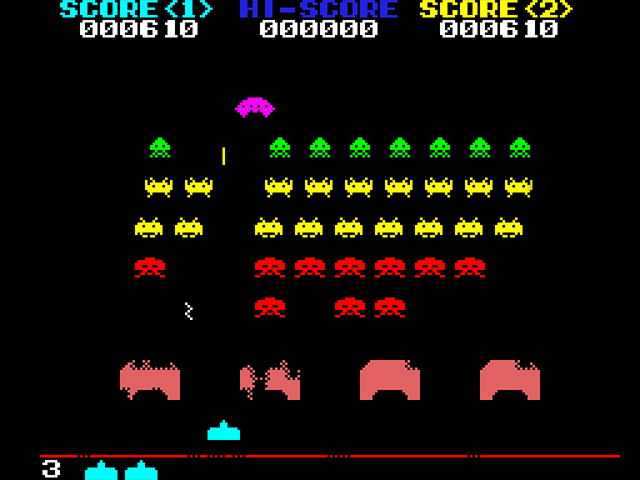
Space Invaders is arguably the most important video game of all time. It was an immediate hit in arcades when it was released in 1978 and helped popularize shooters. The game also helped usher in the age of Japanese video game developers and shaped the entire industry. The arcade game was so popular that it caused coin shortages in Japan, and the Atari 2600 port effectively quadrupled the console’s sale numbers. On the off chance that anyone reading this is unfamiliar with the game, Space Invaders simply challenges players to shoot down waves of alien ships. Players move their ship left to right across the bottom of the screen and seek shelter behind four stationary shields. Meanwhile, the aliens move steadily from one side of the screen to the other and slowly descend on the player. With each alien that you destroy, the remaining aliens speed up and become harder to take down. Most versions of the game featured re-drawn sprites and significantly reduced the number of aliens on screen, but the SG-1000 port more closely resembled the arcade game. It’s a simple game by today’s standards and was fairly outdated by the time it was released on the SG-1000, but there was a reason why it was so beloved.
7
Choplifter
1985
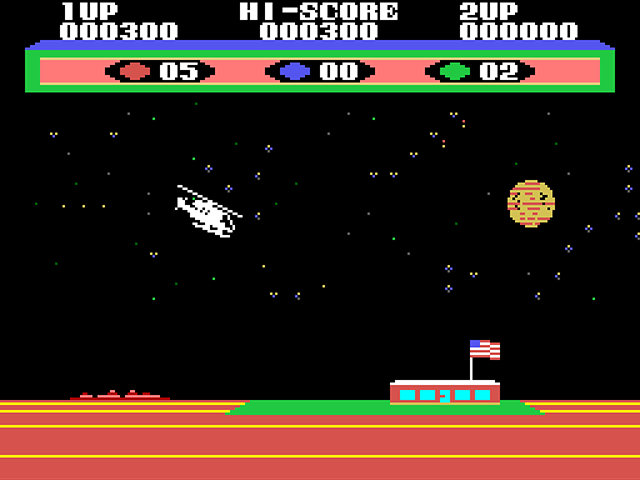
In Choplifter, players assume the role of a helicopter pilot and are given the objective of rescuing hostages from enemy strongholds. After freeing the hostages from their prisons, players must pick them up and safely escort them back to the base. Enemy fire does not subside when you are attempting to retrieve the prisoners, so it’s important for players to manage their time in an efficient manner. After all, picking up hostages is pretty pointless if your chopper is destroyed in the process. Tough decisions are often required, and knowing when to cut your losses is a big part of the game. Trying to save everyone will often result in everyone dying. The game also punishes players for being reckless, and it’s possible to accidentally kill the hostages by landing too close to them. Choplifter has an interesting premise, but the game itself gets a little repetitive after a while. Other versions of the game featured multiple stages to play through, but the SG-1000 version keeps replaying the same mission over and over again. It’s still a fun game, but there was obviously a lot more that could have been done with the concept.
6
H.E.R.O.
1985
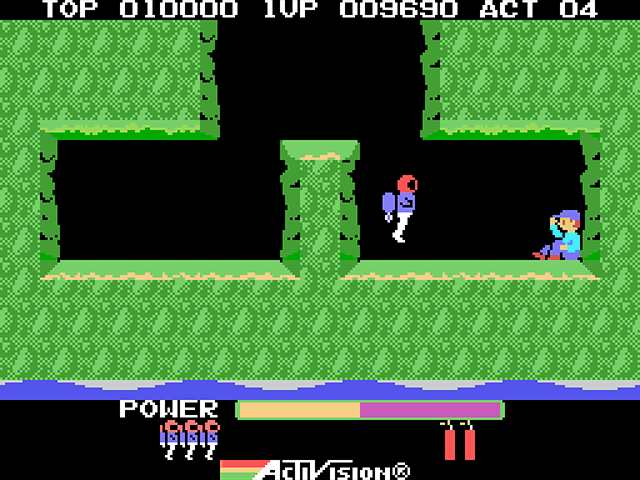
For those wondering, “H.E.R.O.” is apparently an acronym that means “Helicopter Equipped Rescue Operation.” That was an accurate description of the original Atari 2600 version of the game, but it doesn’t make as much sense in the SG-1000 version since the helicopter is replaced with a jetpack. I’ll let it slide, since the SG-1000 version also features vastly superior graphics and sounds. The object of H.E.R.O. is to explore various underground caverns in an attempt to rescue trapped miners. The player takes on the role of a rescue worker named Roderick Hero and is equipped with a laser beam, several sticks of dynamite, and the aforementioned jetpack. The laser beams are used to blast various cave-dwelling creatures (including bats, spiders, and snakes); the dynamite is used to blast through walls; and the jetpack helps Roderick descend through the mine shafts. Players also have to avoid walls of magma, and they will find themselves in the dark if they damage lanterns during their descent. H.E.R.O. features a variety of level layouts and almost feels like a fast-paced puzzle game at times. The levels themselves are not overly-lengthy and gameplay gets somewhat repetitive after a while, but the game never stops challenging the player.
5
Star Jacker
1983
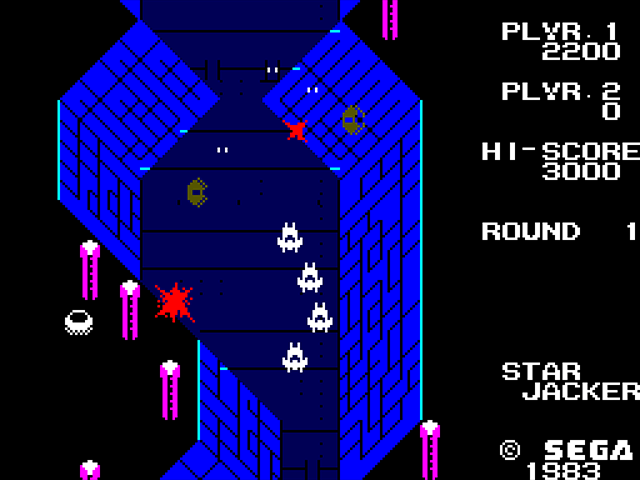
Star Jacker is a vertically-scrolling shooter with surprising depth for an SG-1000 game. Like in Namco’s Xevious, players are attacked from multiple planes and are able to fire straight ahead or bomb enemies below. The game’s most noteworthy aspect is how it approaches the concept of extra lives. In most shooters, an extra ship is nothing more than a variable. When a ship is destroyed, the variable simply decreases until there are no extra ships left. In Star Jacker, the extra ships take an active role in the game and actually follow behind the player in a convoy. Although they travel single file, it takes them a moment to fall back into position after a player moves left or right. When the ships are spread out, the shot pattern is essentially widened. Similar to the “double ship” mechanic in Galaga, having extra ships on the screen also makes you a bigger target for enemies. The game actually becomes a little easier when your extra ships are destroyed, but the safety net is reduced as well. Star Jacker made excellent use of the SG-1000’s hardware and played noticeably smoother than similar games (like the port of Tehkan’s Star Force). For reason’s I don’t understand, Star Jacker was never given any sequels and wasn’t ported to other platforms. The SG-1000 was the only system to receive a home port.
4
Doki Doki Penguin Land
1985
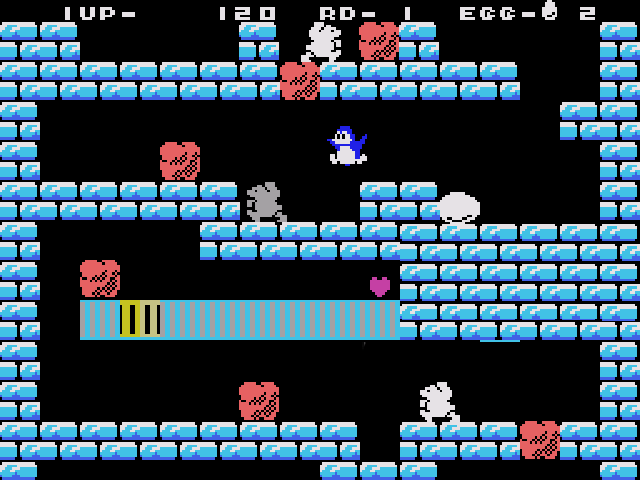
Doki Doki Penguin Land is a puzzle platformer centered around a penguin who must safely escort an egg through a simple maze by moving blocks and melting ice platforms. There are numerous enemies that have to be avoided along the way – including polar bears and weird mole things. The penguin is invincible, but will be stunned if attacked by an enemy. The egg is a lot more fragile, and will break if it falls certain distances. The same mechanics that allow you to drop eggs down to lower levels also allow you to slide heavy blocks that can potentially crush your enemies. Doki Doki Penguin Land is easy to pick up, but a certain amount of planning is required to succeed in the game. The graphics are pretty basic, but the characters are charming. Penguins are always awesome, and I love how the polar bears shake their fists while patrolling the maze. Many games on the SG-1000 were ports of arcade games, but Doki Doki Penguin Land was released on the SG-1000 first and then ported to arcades. The game was also released on the MSX and spawned sequels on the Master System and Mega Drive.
3
Gulkave
1983
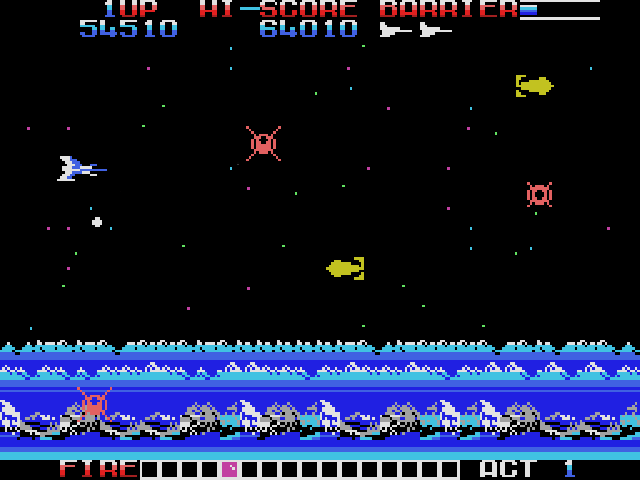
Though credited to Sega, Gulkave was actually developed by Compile. Nobody did action in the ’80s like Compile did, and the developer built a reputation on visually-impressive games. Gulkave is a side-scrolling shooter and the best-looking game on the SG-1000 by a considerable margin. Most shooters on the console featured boring backdrops, but Gulkave has different backgrounds for each of its 30 acts and even features multi-plane scrolling. The gameplay is a lot more varied than most shooters too, and there are many power-ups to collect. One upgrade will allow you to fire five shots at once! The enemies are numerous and their patterns in the game are surprisingly complex for the era. Ships will sometimes group together, and projectiles will often split off into smaller groups of bullets. It can be quite difficult to dodge everything that the game throws at you, but players have a shield to prevent cheap one-hit deaths. Gulkave is an early gem from Compile, and I’m honestly surprised that it even exists. The game would put many Master System games to shame! From a technical standpoint, it seems way to advanced for the SG-1000 hardware.
2
Sega-Galaga
1983
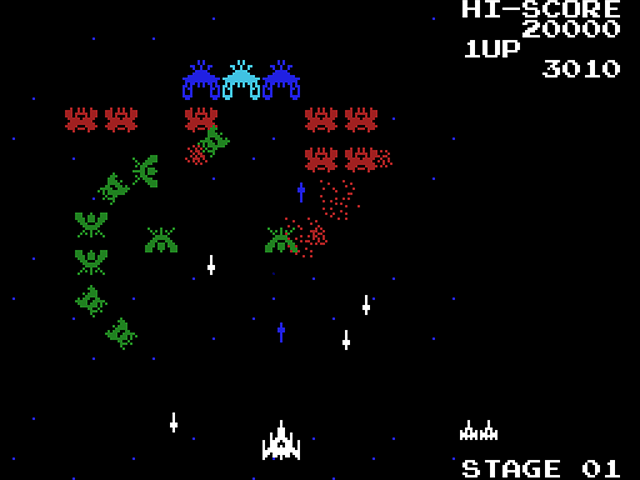
Sega-Galaga is a space-based shooter in the vein of Space Invaders and one of the best arcade games of the early 1980s. Like most games in the genre, the game challenges players to shoot down waves of enemy fighters. The enemies in Galaga are decidedly more combative than those seen in Space Invaders, however, and they will break apart from their friends and aggressively dive-bomb players. Galaga was also noteworthy for its “double ship” mechanic. If a player’s ship is captured by an alien, they have the opportunity to rescue the ship. If a rescue attempt is successful, the ship will be returned to the player and be tethered to their current ship. This effectively allows the player to control two ships at once. Although this effectively doubles their firepower, it also makes them a larger target for enemy fighters. The enemy ships in Sega-Galaga aren’t as detailed as they were in the arcade original, the animation is choppy, and the game feels a little more repetitive since the “challenge stages” are MIA. It still plays really well and was easily the best console version of the game available when it was released in 1983.
1
Girl’s Garden
1984
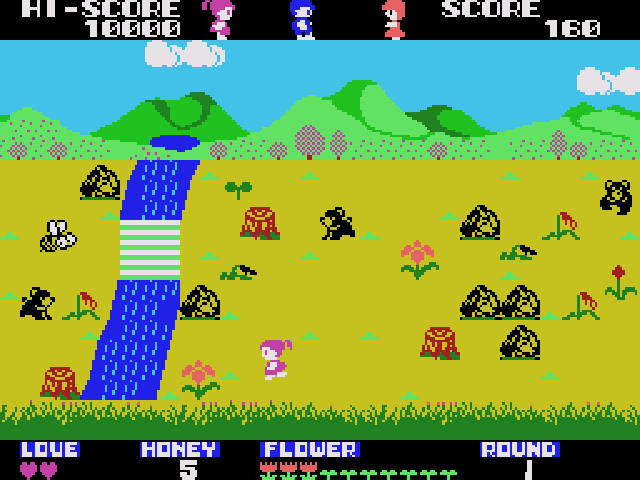
The premise of Girl’s Garden revolves around a young girl who collects flowers for her boyfriend in an ill-conceived plan to win his affection and prevent him from turning his interest to other girls. The flowers in question grow ridiculously fast, and picking them at full bloom is a surprisingly delicate process. Flowers that are picked too early are basically wasted, while flowers that are picked too late will ruin the bouquet. The entire process is complicated further by numerous bears that roam the area. Players can distract the bear by dropping pots of honey, but they’re pretty much under constant threat of being attacked. Girl’s Garden has been cited as an early example of a dating sim, but it’s really just a simple action game. The concept of a young girl fending off bears to retain the love of a boy is pretty ridiculous, and I would hope the scenario isn’t a simulation of any real-life situation. The SG-1000 was home to many arcade ports, but Girl’s Garden is the best game designed specifically for the console. The game is also noteworthy as being the first game designed by Sonic creator, Yuji Naka.

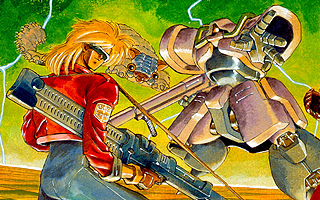
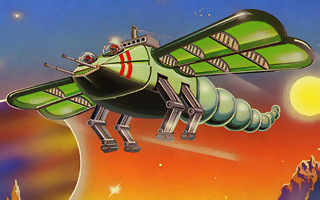
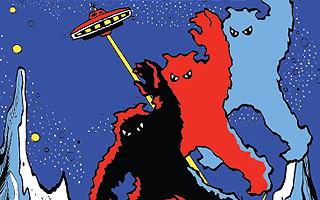
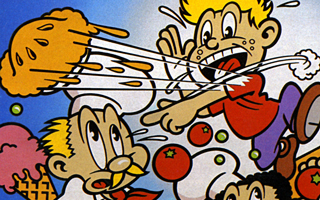
Do you agree with this list? Let us know what you think by leaving a comment below. Your opinion matters!